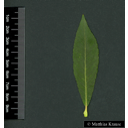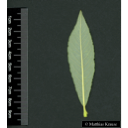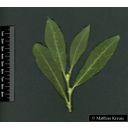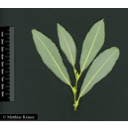Useful information about the taxon (species, subspecies, variety...)
Salix aurita L. 1753
Salicaceae
(APG IV)eared willow
Taxon concept: The Plant List (2014), version 1.1
Salix aurita L. - Accepted: Salix aurita L. bei The Plant List (2010); Familie: Salicaceae (APG III)Salix aurita L. - Accepted: Salix aurita L. bei Schmeil-Fitschen 2019; Familie: Salicaceae (APG IV)Salix aurita L. - Accepted: Salix aurita L. bei BfN Checklist Flora DE; Familie: Salicaceae (APG IV)Salix aurita L. - Accepted: Salix aurita L. bei World Flora Online - APG IV (Angiosperms); Familie: Salicaceae (World Flora Online - APG IV (Angiosperms))
- Life form
- woody, shrub
- Foliage persistence
- deciduous
- Soil conditions
- on waterlogged and perculating wet, moderately nutrient-rich and alkaline, free of limestone, moderately acid, humus- or turf-rich sand and clay soils
- Light conditions
- half light plant
- Natural occurrence (habitat)
- spring fens, peat bog rims, bog meadows, heaths, lakeshores, open carrs; lowland to highland
- Vegetation typ and synecology (plant community)
- characteristic species of the Salicetum auritae (Salicion cinerae), also differential species in Frangulo-Rubenion communities
- Constraints according soil conditions
- not salt tolerant
Erhardt, W., Götz, E., Bödeker, N. & Seybold, S. (2008): Der große Zander. Enzyklopädie der Pflanzennamen. Band 2. Arten und Sorten. Eugen Ulmer KG, Stuttgart (Hohenheim), 18. Aufl., 2103 S.; Haider, M. et al. (2005): Wildbienenkataster. See: https://www.wildbienen-kataster.de; Jäger, E. J. et al. (2007): Rothmaler - Exkursionsflora von Deutschland. Band 5: Krautige Zier- und Nutzpflanzen. Spektrum Akademischer Verlag, Aufl. 31.10.2007: 880.; Kew Gardens and Collaborators (2017): Plants of the World Online. see: plantsoftheworldonline.org.; Oberdorfer, E. (2001): Pflanzensoziologische Exkursionsflora. Für Deutschland und angrenzende Gebiete. Eugen Ulmer Verlag, Stuttgart, 8., stark überarb. u. erg. Aufl, 1056 S. 978-3-8001-3131-0.; Pritsch, Günter et al. (1985): Bienenweide.. Neumann-Neudamm, Melsungen; Pritsch, Günter et al. (2007): 200 Trachtpflanzen erkennen und bewerten.. Kosmos, Stuttgart; Schick, B. & Spürgin, A. (1997): Die Bienenweide. Eugen Ulmer Verlag, Stuttgart, Auflage: 4., völlig neubearb. u. erw. A., 216 S. 978-3800174188.; The International Plant Names Index (2009). Published on the Internet http://www.ipni.org; Courtesy to IPNI, 2009. Exported from IPNI at date: 2009-09-22 20:17:51; Westrich, P. et al. (2018): Die Wildbienen Deutschlands.. Ulmer Verlag ISBN 978-8186-0123-2.;
Diese Webseite verwendet Google Maps, um Karten und Standorte von Pflanzen in den Hohenheimer Gärten anzuzeigen. Dadurch werden unter Umständen Daten an Google weitergeleitet, was mit einer Verarbeitung Ihrer personenbezogenen Daten verbunden sein kann. Die Datenschutzerklärung von Google finden Sie hier: Datenschutzerklärung von Google
| Sex | Standort | Accession number | Planting year | Donation | IPEN | Lat. | Long. |
|---|---|---|---|---|---|---|---|
| Vegetationsgeschichte | VG-10656 | 2023-04-22 | XX-0-HOH-VG-10656 | 48,710682 | 9,215198 | ||
| Vegetationsgeschichte | VG-22539 | XX-0-HOH-VG-22539 | 0 | 0 |




